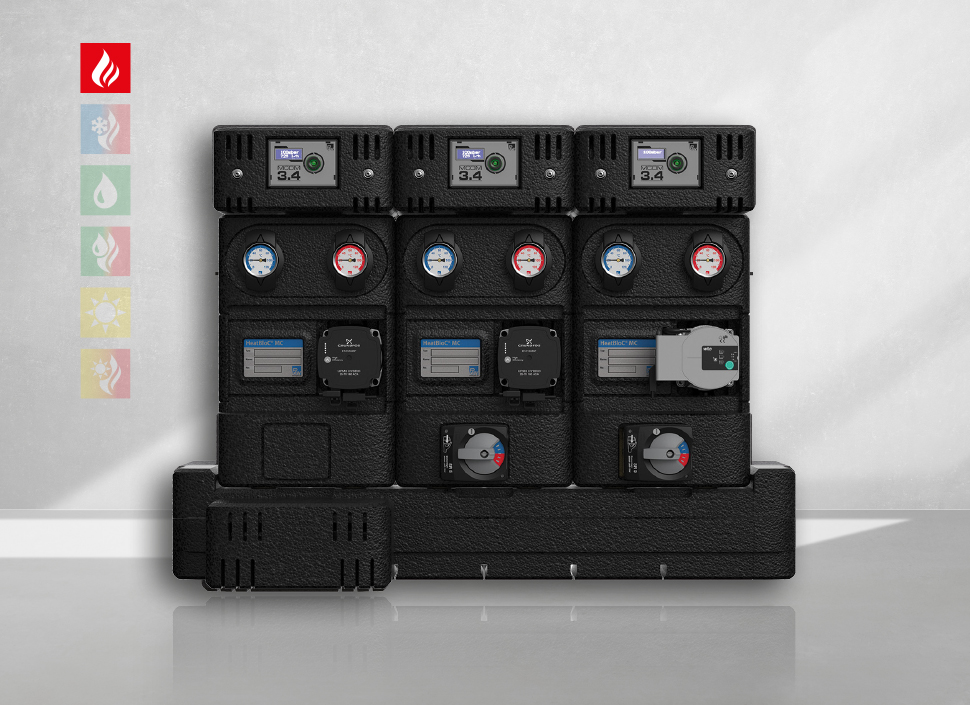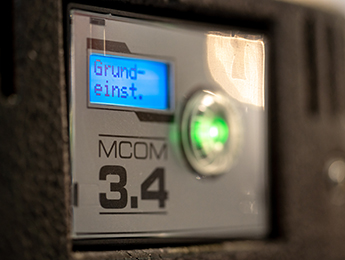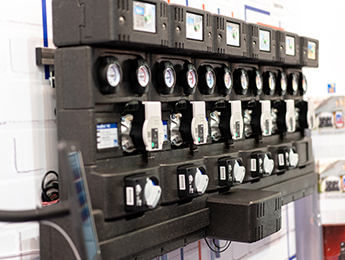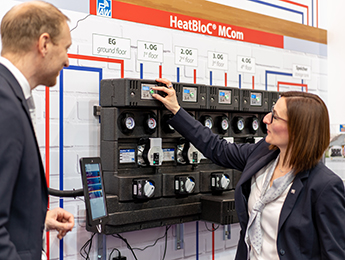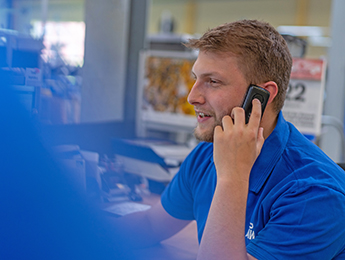Do you often need to vent your radiator? The radiator is not warm enough? Or the radiator makes noises? Many radiators are not hydraulically balanced, therefore they do not heat equally. For the hydraulic balancing of a heating installation, not only the radiators must be balanced, but also the heating circuits at the distribution manifold. Ask your heating engineer about a hydraulic balancing of your heating installation. For an automatic, hydraulic balancing on the distribution manifold level as well as on the radiator level, the PAW heating circuit HeatBloC® MCom offers the perfect prerequisites.
In short: The HeatBloC® MCom system combines the balancing on both levels and ensures a comfortable heating of all rooms and an energy-efficient operation of your heating system! With the modernisation of your heating system, you can save up to 50 % of pump energy! In addition, modernisations are currently promoted with the BEG (German federal subsidies for efficient buildings) of the BAFA.

